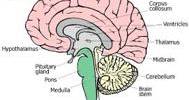Biomarkers are useful for detecting disease-relevant information, which can be used to assist recruit, stratify, and follow patients, as well as to assess the safety and efficacy of drugs. We’ll talk about what digital biomarkers are and how they can transform research and drug development in psychiatric and neurological disorders.
Subcortical small-vessel disease has become an increasingly common cognitive diagnosis in recent years. Researchers at the University of Gothenburg have now demonstrated that it is possible to identify people with the disease by combining two biomarkers evaluated in spinal fluid and blood, thus enhancing the possibilities for both treatment and medicine development.
Subcortical small-vessel disease is one of the most frequent cognitive disorders, along with Alzheimer’s disease and mixed dementia, a form of Alzheimer’s disease that occurs in conjunction with vascular impairment in the brain.
When we paired the vascular injury biomarker with the protein fragment we identified, the potential for distinguishing patients with subcortical small-vessel disease from control subjects, patients with Alzheimer’s disease, and patients with mixed dementia was improved.
Petronella Kettunen
The article’s principal author is Petronella Kettunen, associate professor of neuroscience at the University of Gothenburg and project manager for the Gothenburg Mild Cognitive Impairment study:
“We did not have any indicators for subcortical small-vessel disease before today, which meant that the disease could not be easily recognized by examining spinal fluid or blood samples. We have now created a chance to diagnose the disease, allowing this patient group to receive assistance in the form of lifestyle adjustments and blood pressure-lowering medicines” she claims.
Researchers from the University of Gothenburg studied numerous biomarkers assessed in spinal fluid and blood samples to see if they might be used to differentiate between these three common cognitive illnesses. The study includes a total of 170 patients, including control participants.
Identifies subcortical small-vessel disease
The study indicates that a vascular injury biomarker based on the ratio of the protein albumin in spinal fluid and blood was considerably higher in patients with subcortical small-vessel disease. The study also discovered a novel biomarker in spinal fluid, a fragment of the amyloid precursor protein (APP), which was lower in patients with subcortical small-vessel disease.
“When we paired the vascular injury biomarker with the protein fragment we identified, the potential for distinguishing patients with subcortical small-vessel disease from control subjects, patients with Alzheimer’s disease, and patients with mixed dementia was improved,” adds Kettunen.

Well-defined research basis
The findings also expand the possibility for fine-tuning patient populations during clinical trials for new medications. Diagnosis of these disorders is critical for identifying the appropriate patient groups for each disease, which enables future treatment research.
“For a treatment trial for Alzheimer’s disease, for example, you need to ensure that all of the patients are suffering from Alzheimer’s and not from another cognitive condition, or else the results will be inaccurate.”
Alzheimer’s & Subcortical Small-Vessel Disease
- Alzheimer’s illness develops gradually. Because the brain regions responsible for this function are broken down early in the disease’s development, it frequently causes memory loss.
- In contrast, subcortical small-vascular illness affects veins deep within the brain, below the cerebral cortex, resulting in different cognitive symptoms. Before memory becomes substantially impaired, patients frequently experience abrupt personality changes and reduced mental acuity.
- Small-vessel disease can be associated with high blood pressure, and patients often exhibit small cerebral infarcts and other vascular injuries in white brain matter. Patients with subcortical small-vessel disease constitute a large proportion of cases in the vascular cognitive disease group.
Alzheimer’s disease (AD) is the most common progressive, dementing neurological illness in the elderly, affecting tens of thousands of people each year and expected to rise as the population ages. Aside from the financial burden that Alzheimer’s disease places on the healthcare system, the condition has a significant emotional impact on caregivers and families of those affected. With the advent of new treatment techniques with disease-modifying effects in this developing era of AD research, there is an increasing demand for early detection in AD, which is sometimes complicated by a scarcity of biomarkers of AD.
















